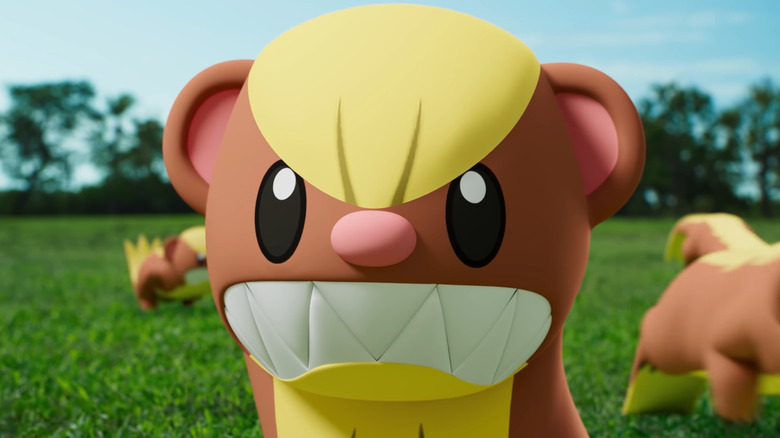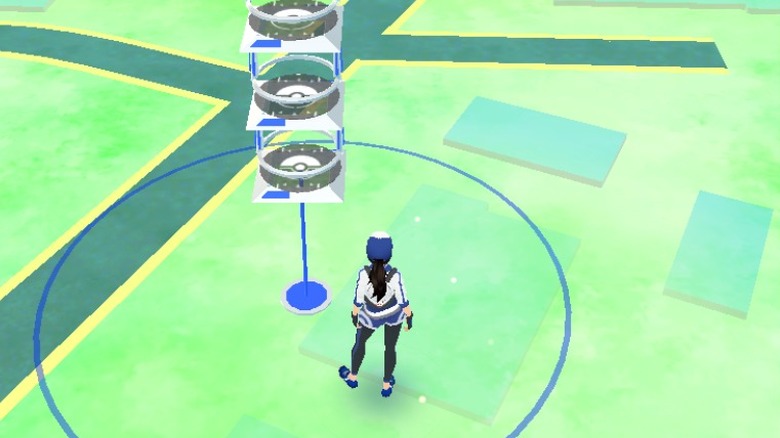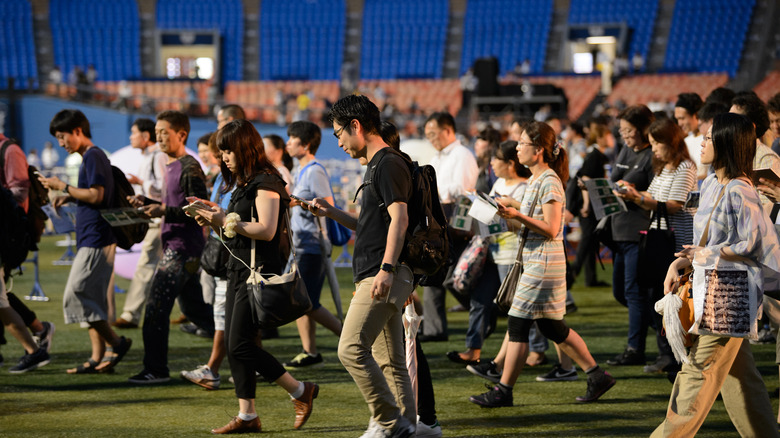Why Pokemon Go Lost 80% Of Its Playerbase Within A Few Months
To say that "Pokémon GO" was very popular when it was released in 2016 would be a massive understatement — the game was a bona fide cultural phenomenon (via Statista). During that summer, it seemed that almost everyone had gotten in on the fun that "Pokémon GO" provided, with large crowds of people gathering at popular landmarks around the world not to take in the sights but to set up Lure Modules and capture their favorite Pokémon in augmented reality. But, unfortunately, the hype would eventually fade. And by the spring of 2017, it was reported that about 80% of the game's original players had left the title and moved on (per Recode via VGC).
Games losing popularity or going through ebbs and flows is quite common. But in the case of "Pokémon GO," it's always been a fascinating subject as it seemed the game was on its way to perpetual relevance akin to titles like "Fortnite" or "Grand Theft Auto Online." Yes, many still play the game, and overall, Niantic has continued to rake in a massive profit. However, things have changed regarding player engagement now versus when the mobile game was first released.
Of course, many factors played into the fall from everyday popularity "Pokemon GO" experienced. However, one change, in particular, seemed to be the catalyst for the unfortunate events that caused a mass exodus.
Changes made to the tracking system factored in
When "Pokémon GO" was first released, it had a tracking system that was pretty handy for the most part. The original tracking system in the game would show the silhouettes of nearby Pokémon (or pictures if it was an already known species). Underneath each silhouette, a number of footprints determined a player's distance from them. As one gets closer, the number of prints decreased from three (far) to one (close). If a player went out of range, the icon or silhouette of the Pokémon they were attempting to catch would disappear completely. While it had flaws, it was a primarily reliable way of helping players figure out where to look for their Pokémon. However, this tracking system would receive a considerable change that many fans were not fond of.
Eventually, Niantic altered this system, so it was impossible to gauge how far or close nearby Pokémon were — which proved unpopular with fans. In turn, many websites started making third-party tracking utilities that players could use instead. Niantic responded by sending several cease and desist orders to any identified services that helped players find Pokémon in specific locations (via The Conversation). While it wasn't the only reason the game began to flounder, it was certainly a big factor. Of course, this isn't the only time Niantic undid popular features in "Pokemon GO," but it's certainly something the community was sad to see go.
The hype train died
Disabled game features aside; it's important to remember something vital: "Pokémon GO" was a trend. Much like fidget spinners or "Farmville" before it, there was a period where it seemed everyone with an iOS or Android device was wandering the streets addicted to "Pokémon GO," looking for Pokémon to add to their collection. And like every other trend, mass public attention and engagement eventually waned, with many electing to move on.
Eventually, like all games, it lost the attention of the public at large and instead retained its core — hardcore "Pokémon" fans. As noted by Dave Thier of Forbes, the popularity and engagement that "Pokémon GO" attracted was never meant to last and would've been unprecedented had it done so. "Most of this is just natural: no game could possibly sustain the sort of fever pitch that characterized 'Pokémon GO,' and normalizing as the most successful mobile game ever is an accomplishment in my book," Thier said.
Maybe one day, "Pokemon GO" will see another significant uptick that brings at least some of the lapsed players back. But for now, it remains a popular mobile game that will always be remembered for the fun (and life-ruining) it brought.



